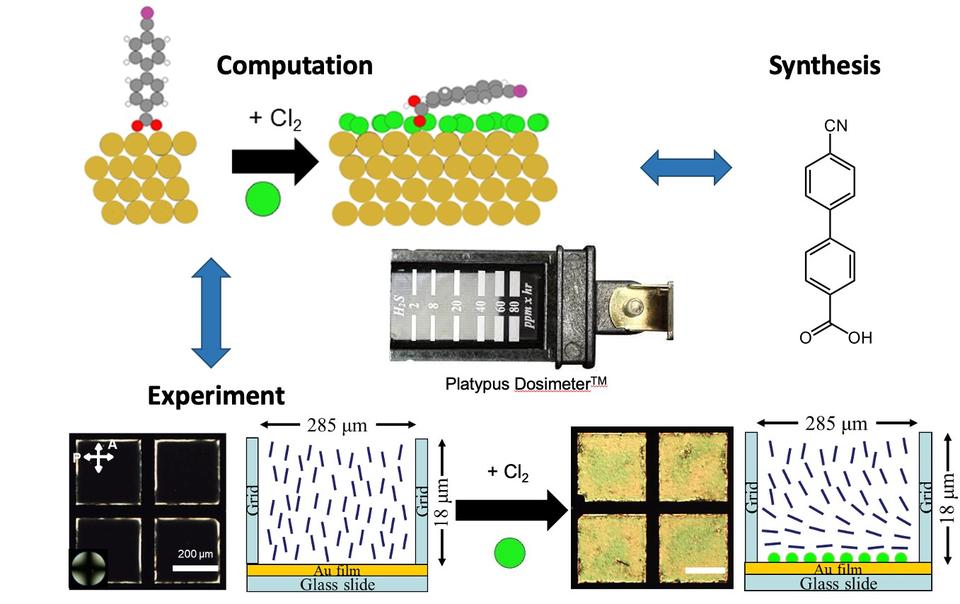DMREF: Accelerating the deployment of toxic gas sensors

Computations predicted (top left) that chlorine gas will displace liquid crystals on metallic gold surfaces to give an optical response. A thin gold film and liquid crystals (top right) were synthesized. Experiments confirmed a change in the optical output of the system upon exposure to chlorine gas (bottom). The technology has been deployed in a commercial sensor (center). See https://liquid-crystals.engr.wisc.edu/
Created September 2, 2021, Updated December 15, 2022

